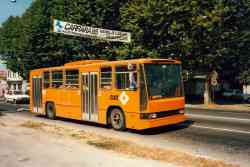 Городской электротранспорт
Городской электротранспортКомментарии к фотографиям из города Каррара
Фильтр

Ссылка
Петушков Илья ·  Мельбурн · 04.02.2024 15:39 MSK
Мельбурн · 04.02.2024 15:39 MSK
 Мельбурн · 04.02.2024 15:39 MSK
Мельбурн · 04.02.2024 15:39 MSK
Нет фотографий
Каррара, Alfa Romeo 920 AF/Menarini (modernised) № 103
Мобильная версия
Тёмная тема
© Администрация ТрансФото и авторы материалов, 2002—2024
Использование фотографий и иных материалов, опубликованных на сайте, допускается только с разрешения их авторов.
Использование фотографий и иных материалов, опубликованных на сайте, допускается только с разрешения их авторов.





















 Ист-Хейвен - Бранфорд
Ист-Хейвен - Бранфорд Антверпен
Антверпен Милан
Милан